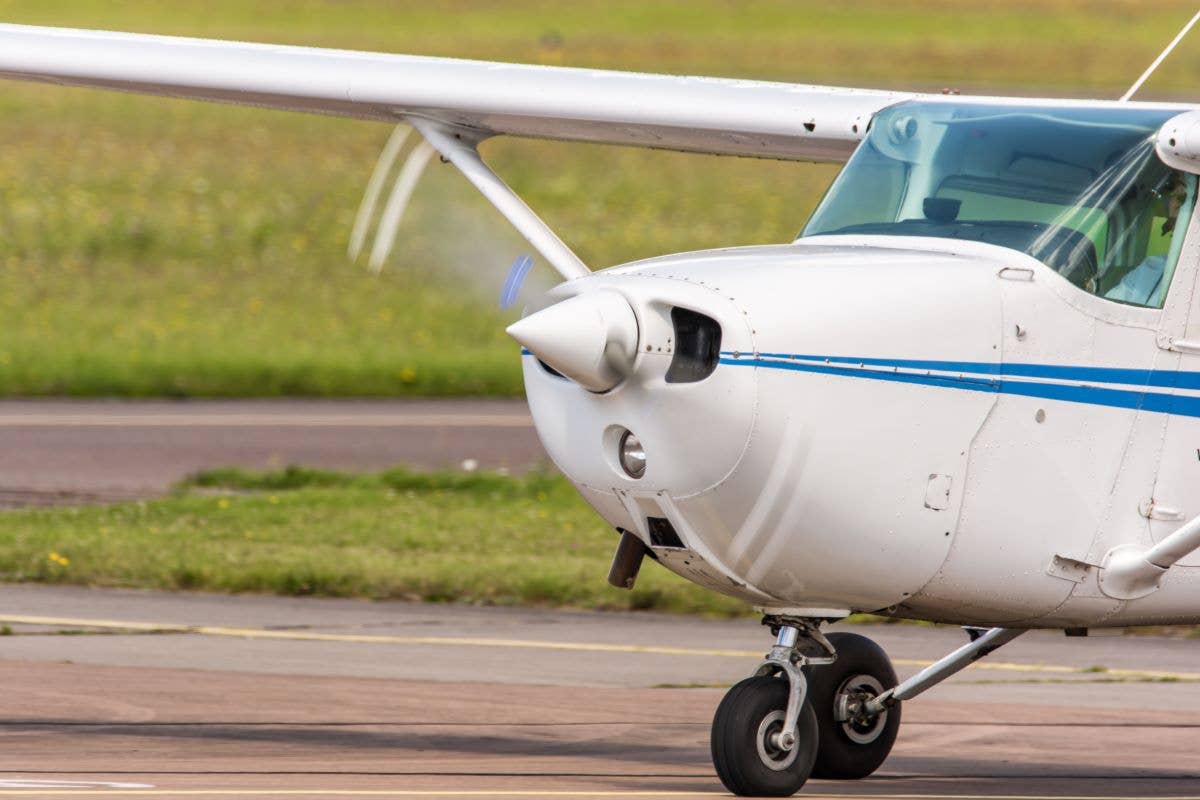
Parkovich says his most important piece of test gear is the seat of his pants. Scott Spangler
Just six months on the job as Enstrom Helicopter’s production test pilot, Cody Parkovich traces his position to the night he was bartending in Marinette, Michigan. “That night I found out, when I was 23,” that Enstrom was a hometown company. “And I grew up here.”
Just discharged from the U.S. Marine Corps and home from San Diego where he'd served as an F-18 mechanic, “I didn’t know that flying a helicopter was an occupation outside the military,” he said. His original plan was to “go to school and go back into the service, but I got the itch and started flight training in Duluth two weeks later.”
Then he moved around the country to build time and experience in a number of different helicopters, the Robinson R44, Bell 206, the A-Star 350 series, “ and I instructed in a new Guimbal Cabri G2,” he said.
After teaching, Parkovich flew commercial ops in Utah, flying aerial tours in Michigan’s mitten, some ag spraying, and some utility pipeline inspection around Louisville and railroad track surveying with LIDAR, so the Canadian National could measure the grade before they increased the cruising speed of their freight trains.
“This is the life of a professional helicopter pilot,” said Dennis Martin, Enstrom’s director of sales and marketing. “Airplane pilots fly airliners, Helicopter pilots do 25 different things.” In short, they have to be as versatile as the rotary-wing aircraft they fly.
When Parkovich started work at Enstrom two years ago, “I thought I was a halfway decent mechanic from working on fixed wings, and then I found out that helicopters were a whole other ball of worms.” Like most of Enstrom’s workforce of 150, Parkovich works in different areas that cross-complement his primary responsibilities.
“Because I still work on the floor as a mechanic, I know these ships like a doctor knows human anatomy. I’ve been hands-on with the rigging process.” As we talked, he was prepping a turbine-powered 480B, with a Garmin G1000 in the panel, for its final inspection, just across the aisle from the final assembly area. In front of it was the hangar door. (Add Enstrom 66 photo here)
Summarizing the purpose of a production test flight, Parkovich said it takes, on average, 5 hours to demonstrate that the helicopter meets all of its documented performance numbers and that all of its equipment, regardless of how it is equipped for the customer, works as its documentation proclaims.
More specifically, this involves flights at different centers of gravity, making sure it has the same cyclic throws and maneuverability. Accelerating to VNE – the never exceed speed — he checks for adverse vibration and retreating blade stalls. He also flies to track and balance blades and helicopters, a process that reduces the whole-ship vibrations to the absolute minimum. All of the helicopter’s rotating pieces can produce vibration, but they start with the main rotor, which can vibrate on both the vertical and lateral planes.
New blades are balanced chord-wise, the added weights written on the tips, and span-wise. Those balances are refined by flying the blade set in a known ship, said Parkovich. Putting them on a new helicopter would introduce too many variables, such as tail rotor vibrations.
This also saves start cycles on the Rolls-Royce turbines, said Martin. “They only get 3,000 cycles before they need hot-section maintenance, and when you’re making blade adjustments, you have to shut down, adjust, and restart. And if it takes 25 or 35 cycles, you don’t want to give that to a customer.”
Production flight test doesn’t involve a lot of test equipment, said Parkovich. His most important instrument? The seat of his pants. In another summary, his job is to “make sure very helicopter feels the same, flies the same way.”
— Scott Spangler, Jetwhine Editor
If you enjoyed this story and want to regularly read a slightly different perspective on the industry, visit Jetwhine and subscribe. It’s free. — Rob Mark, Jetwhine publisher

Sign-up for newsletters & special offers!
Get the latest FLYING stories & special offers delivered directly to your inbox






